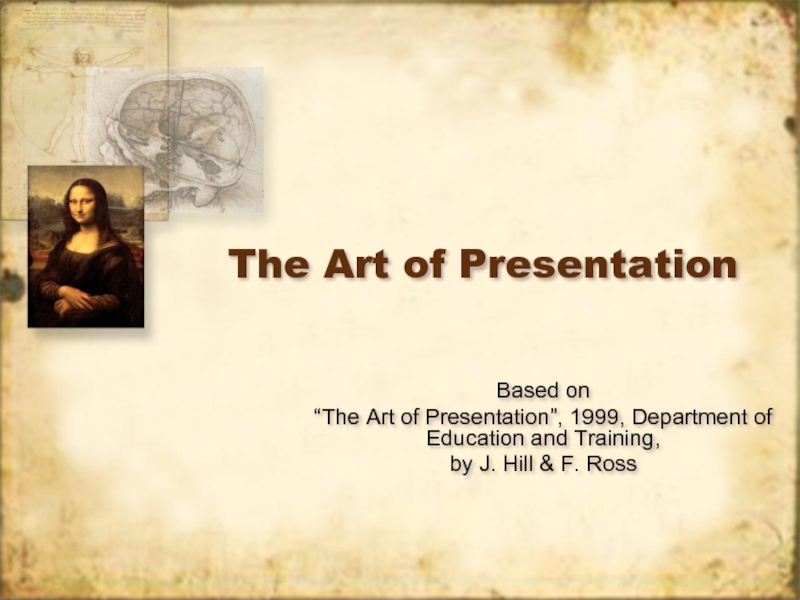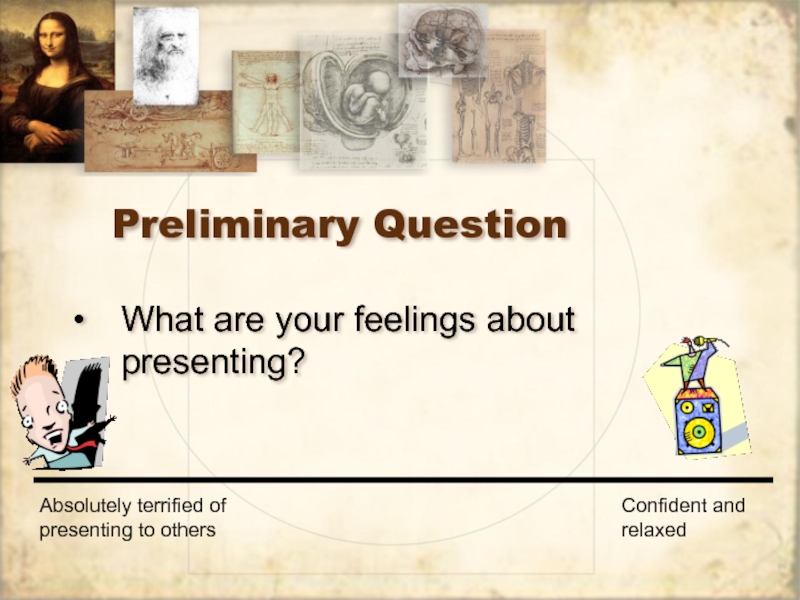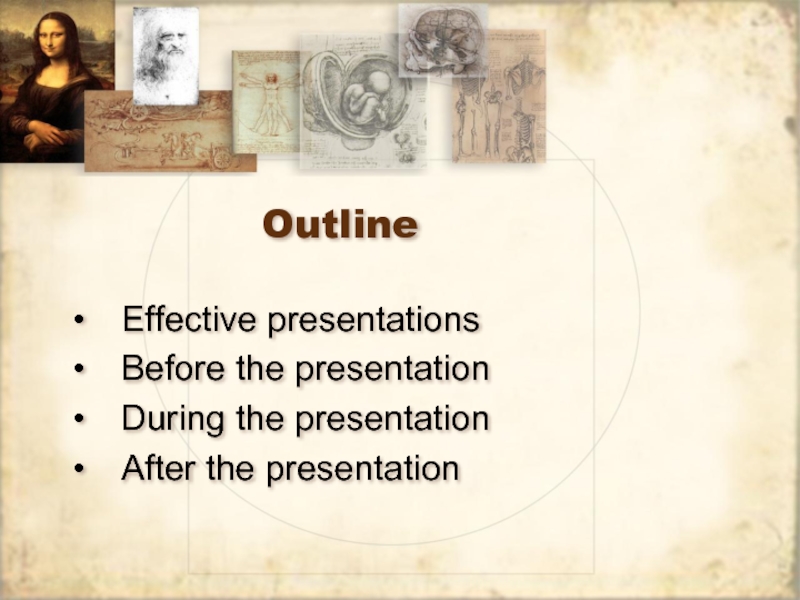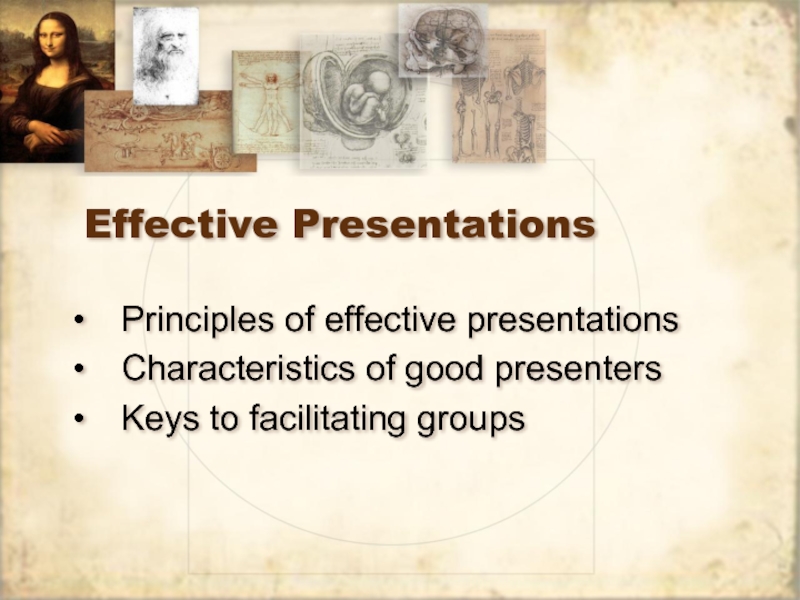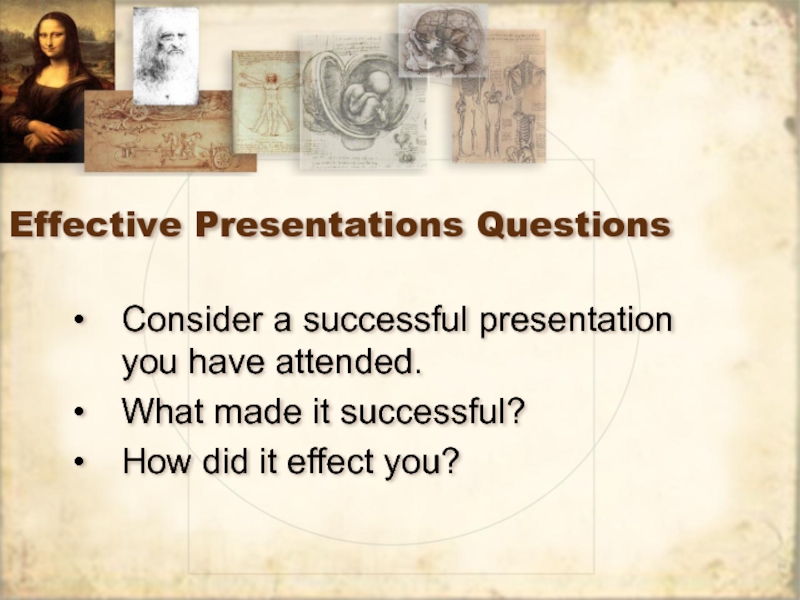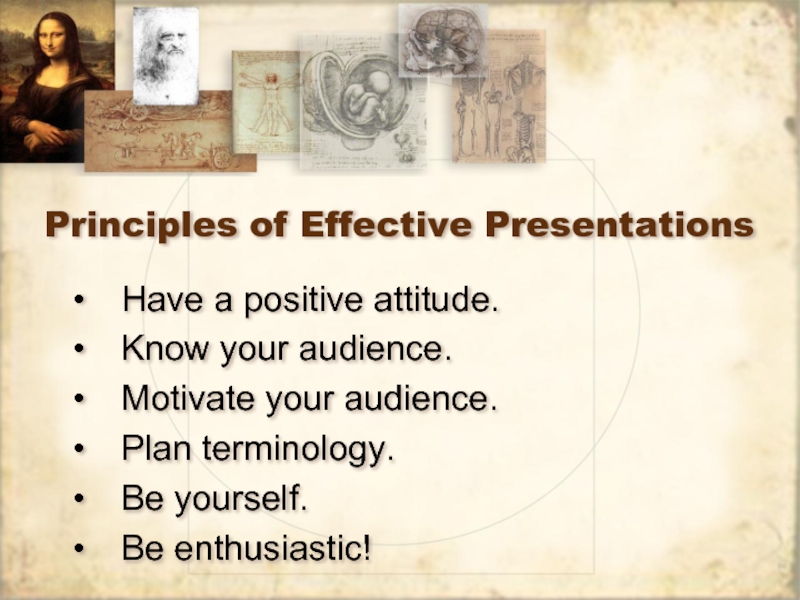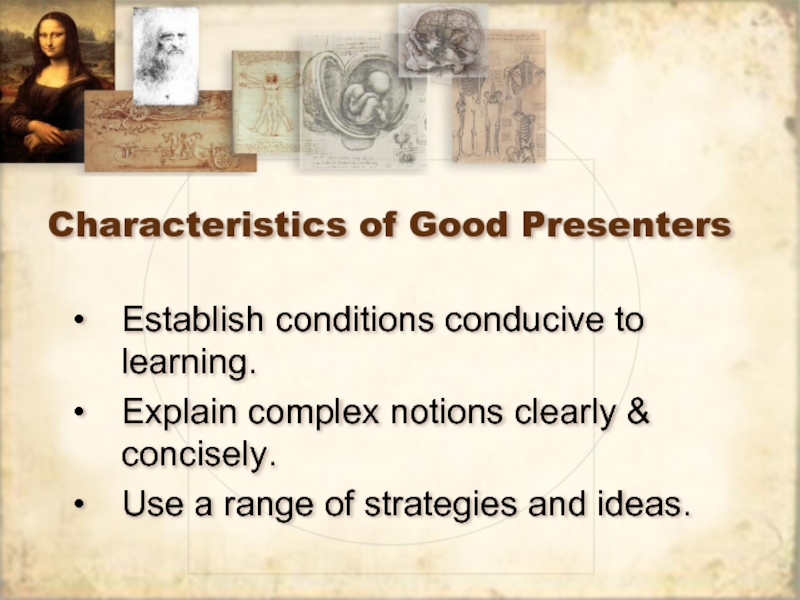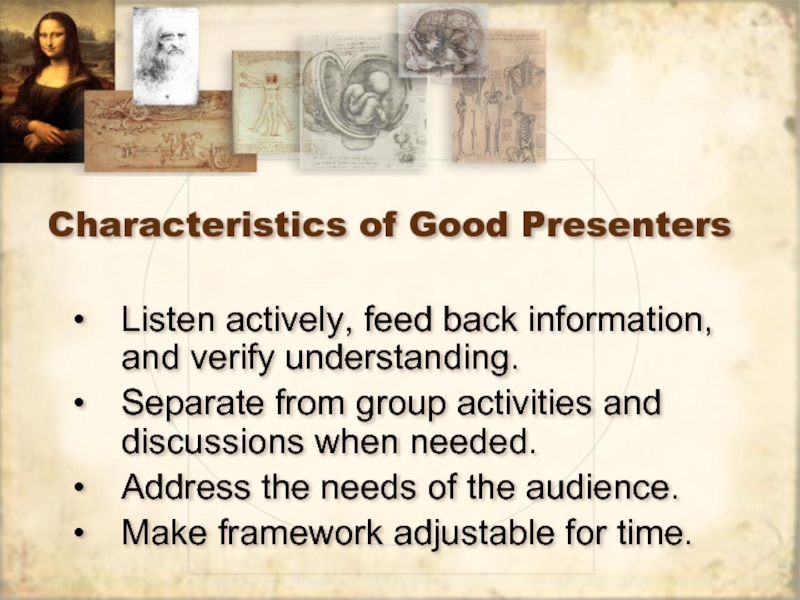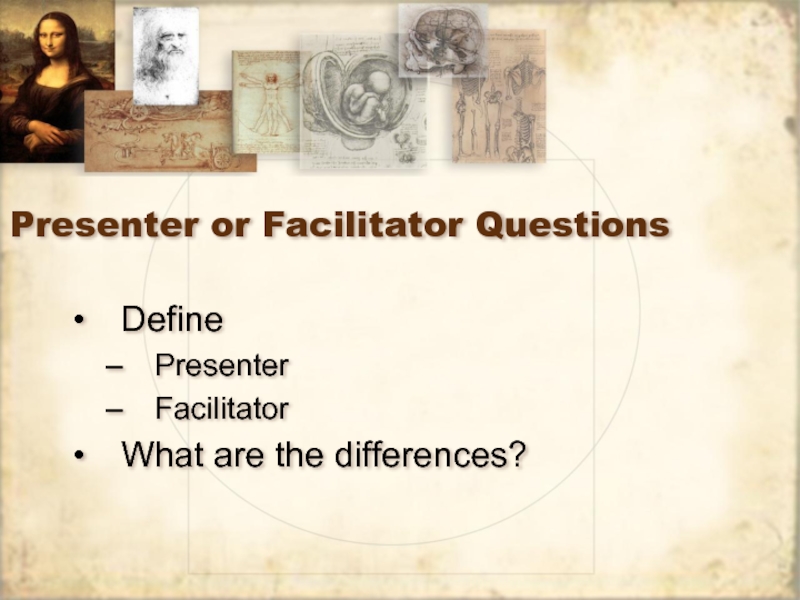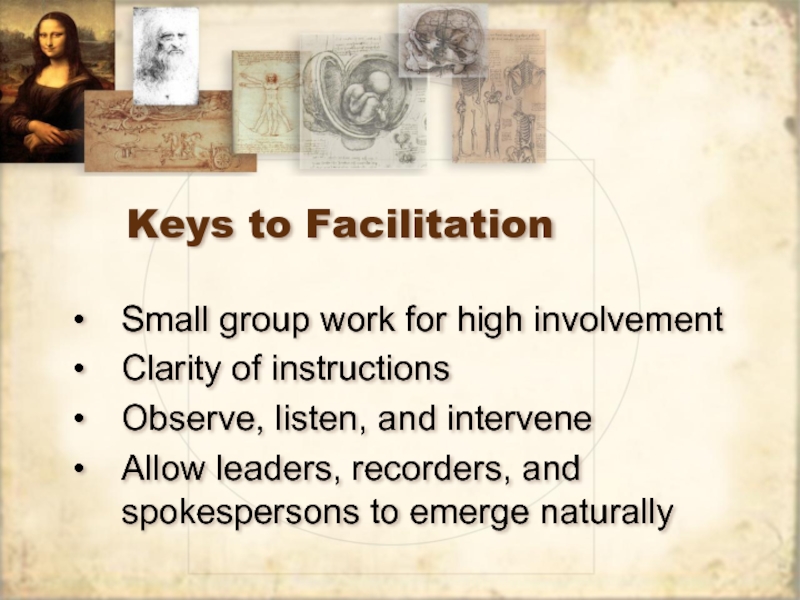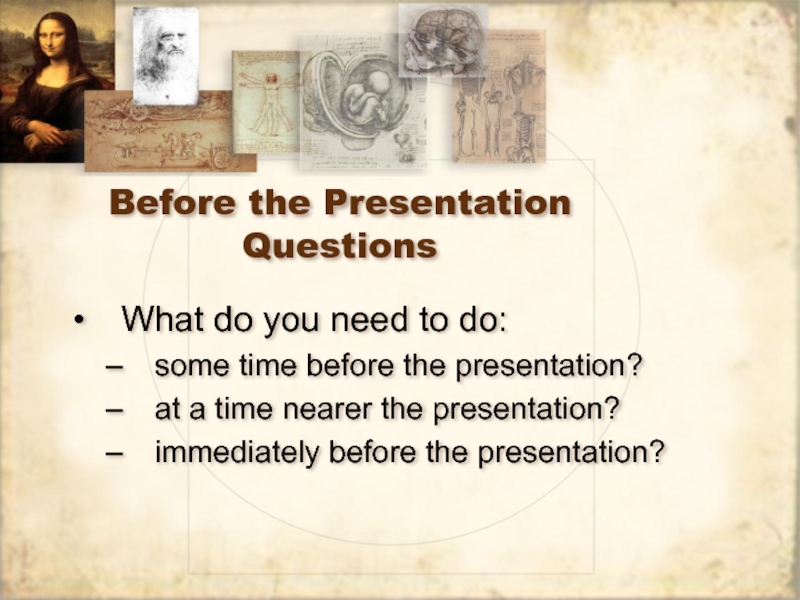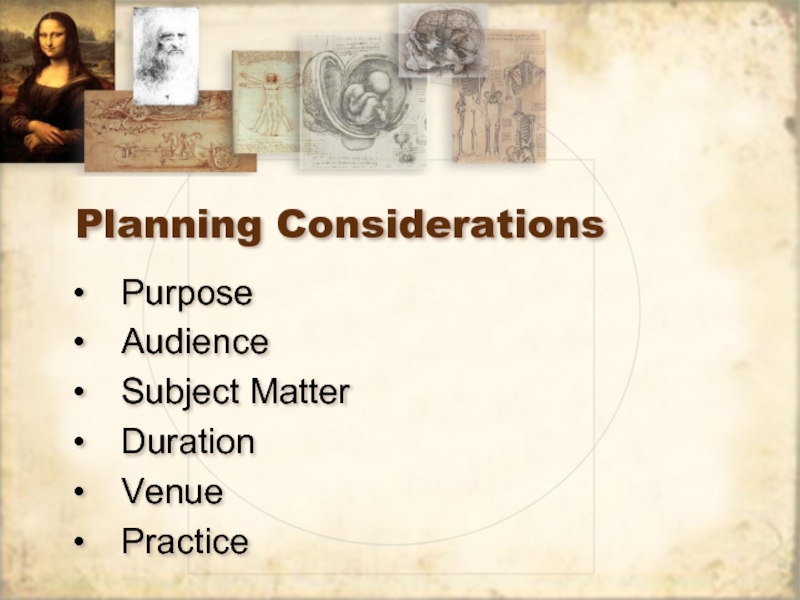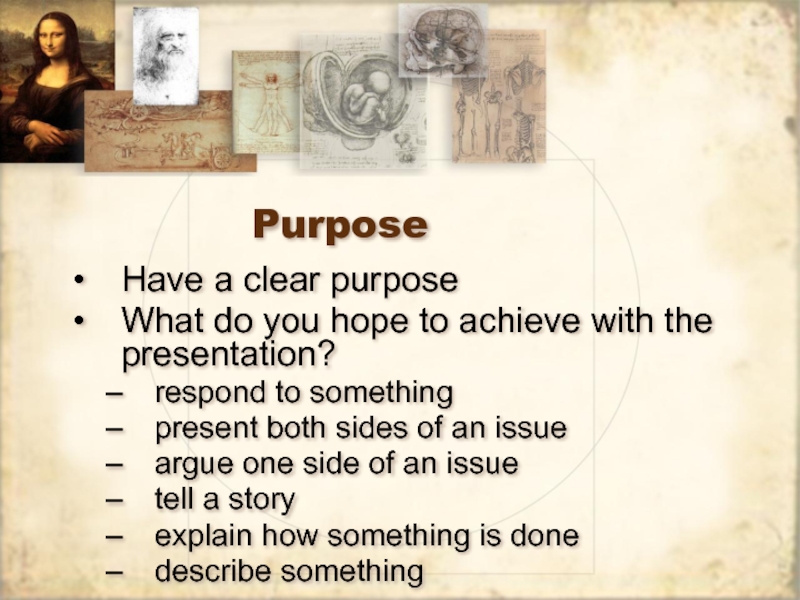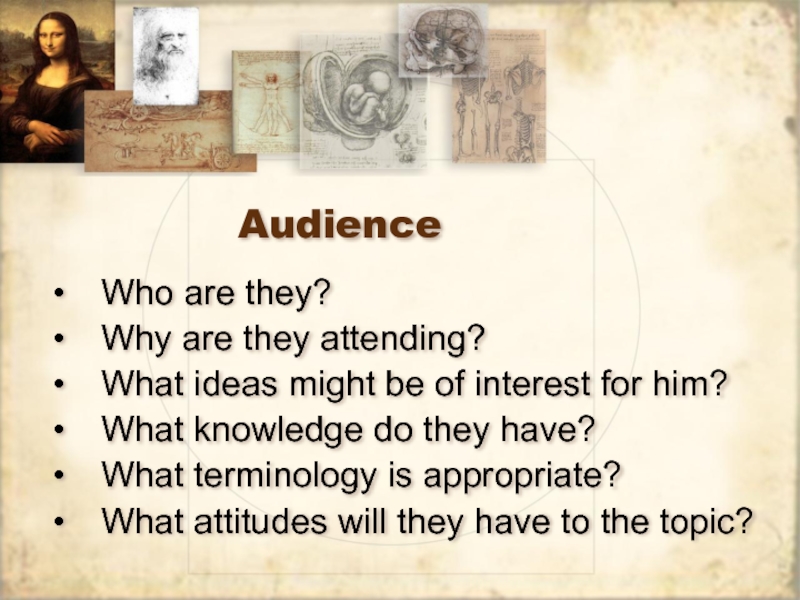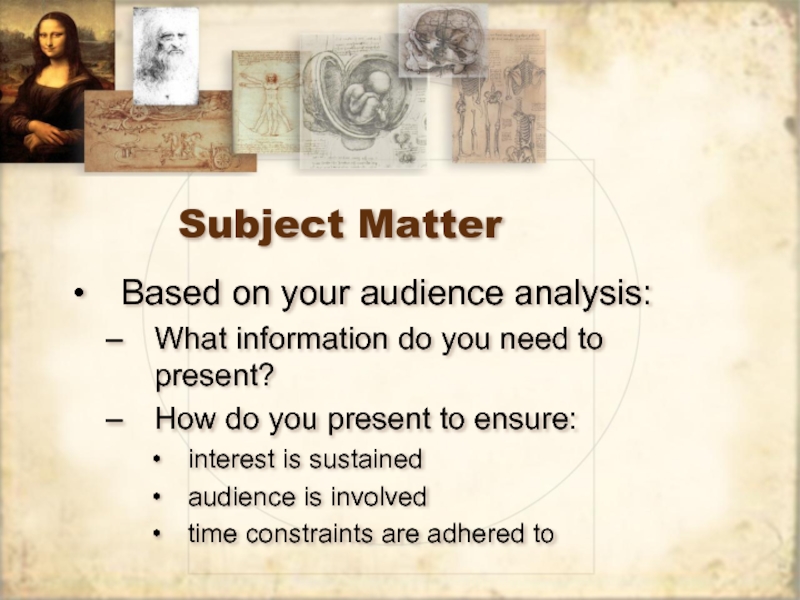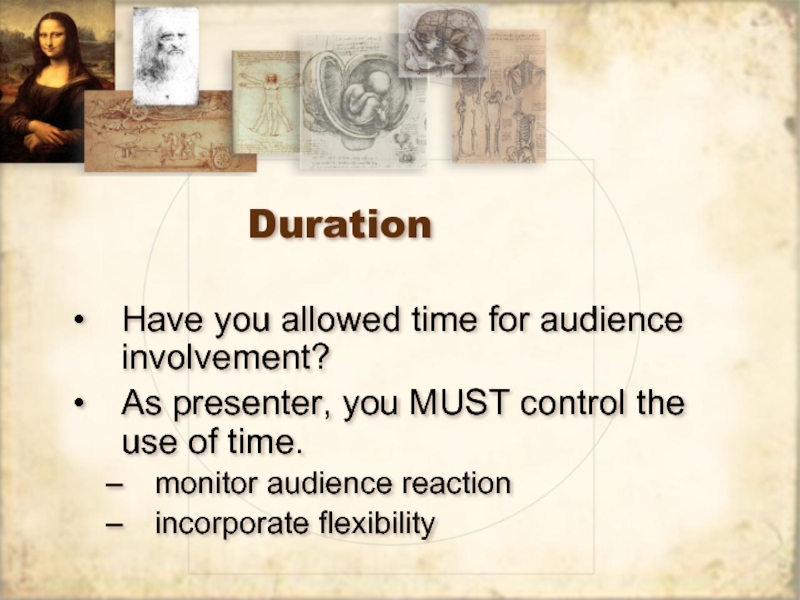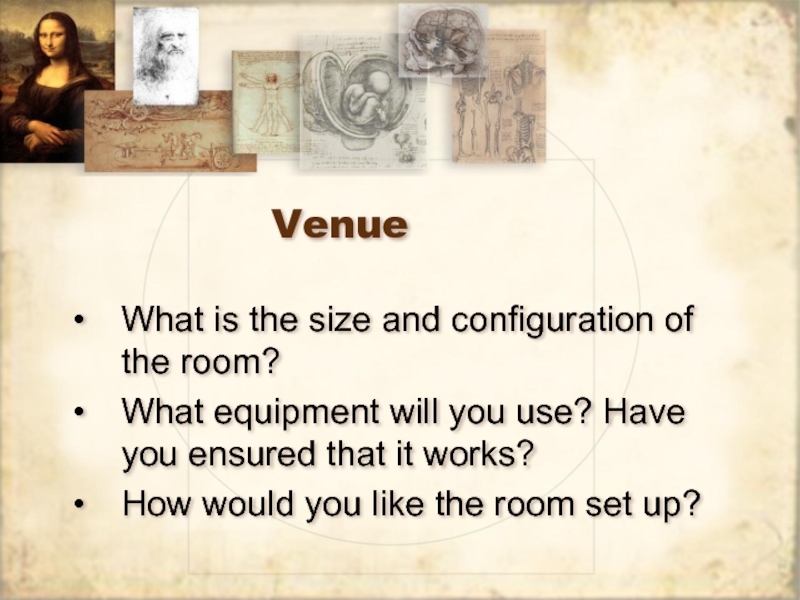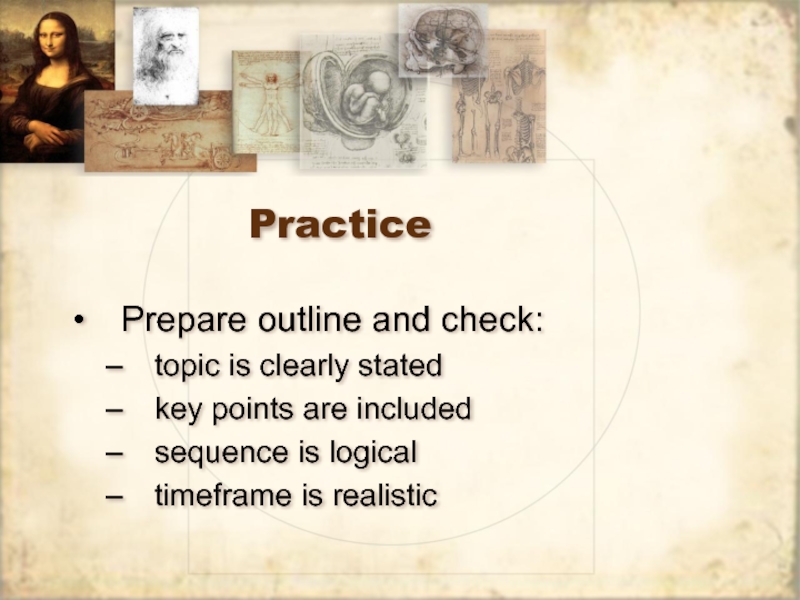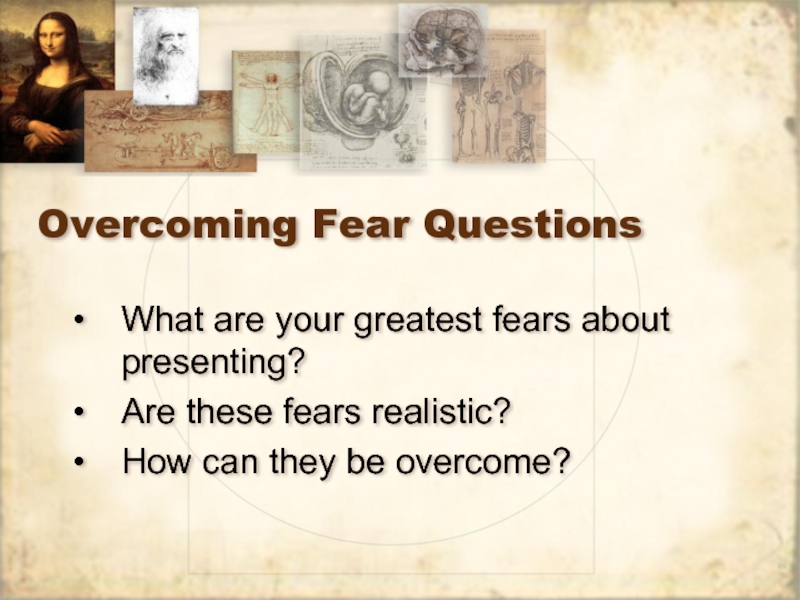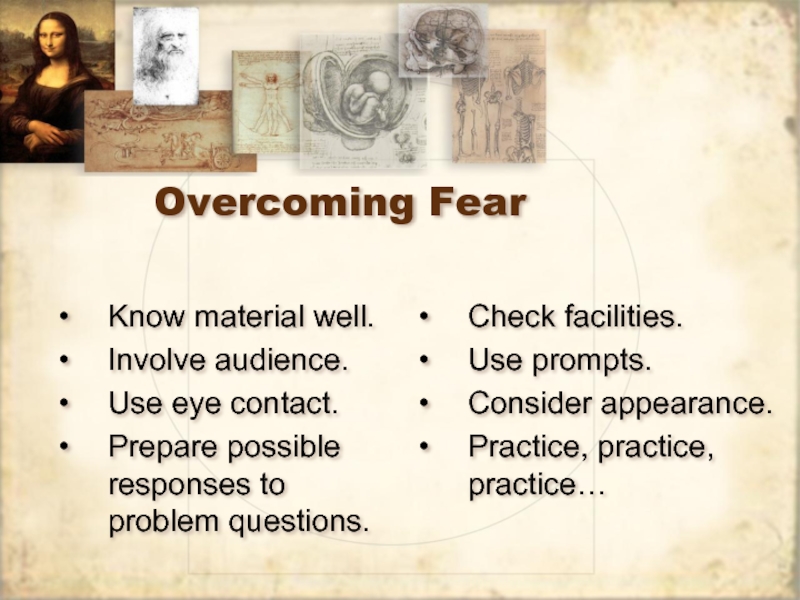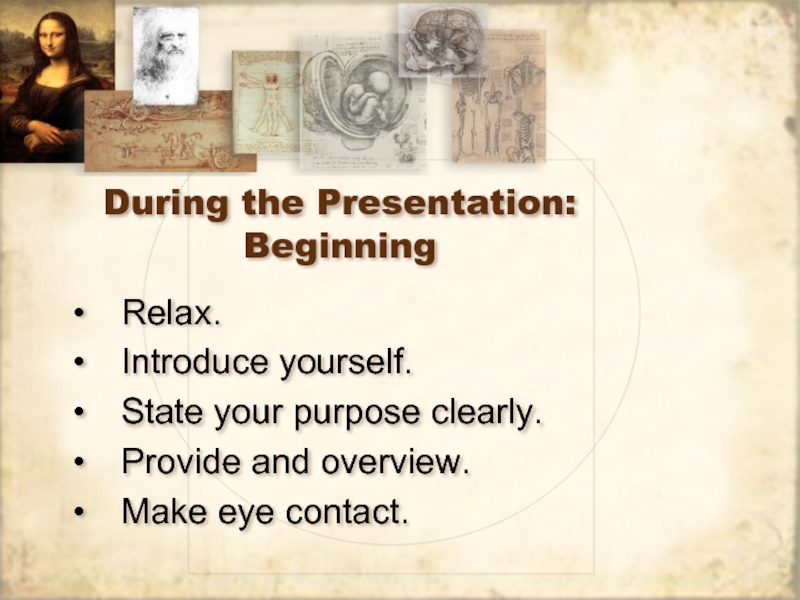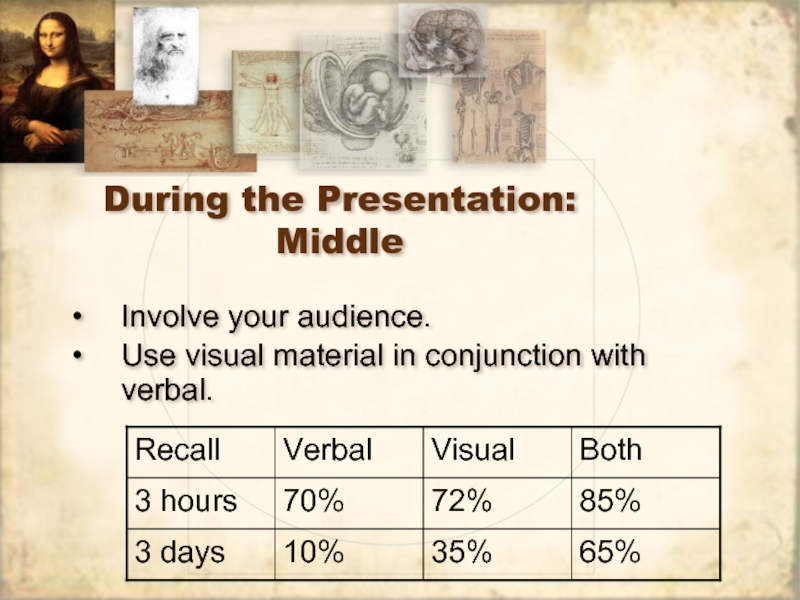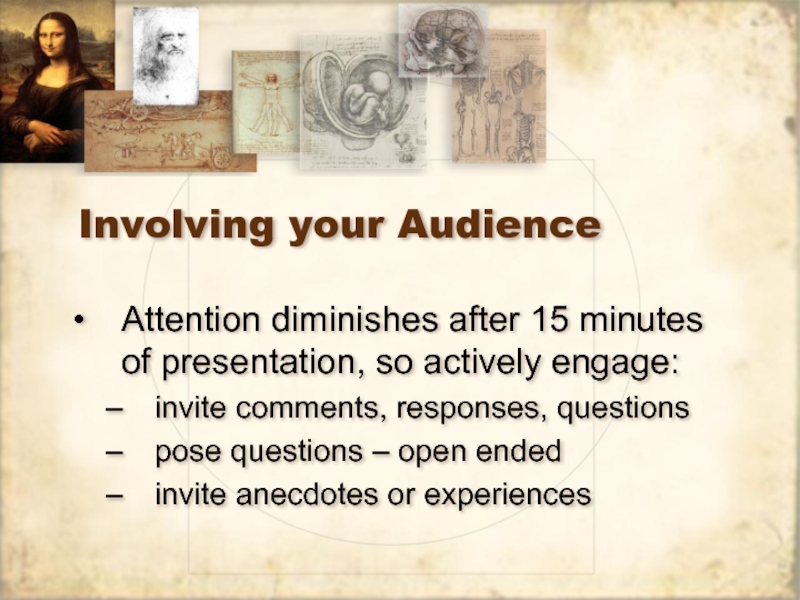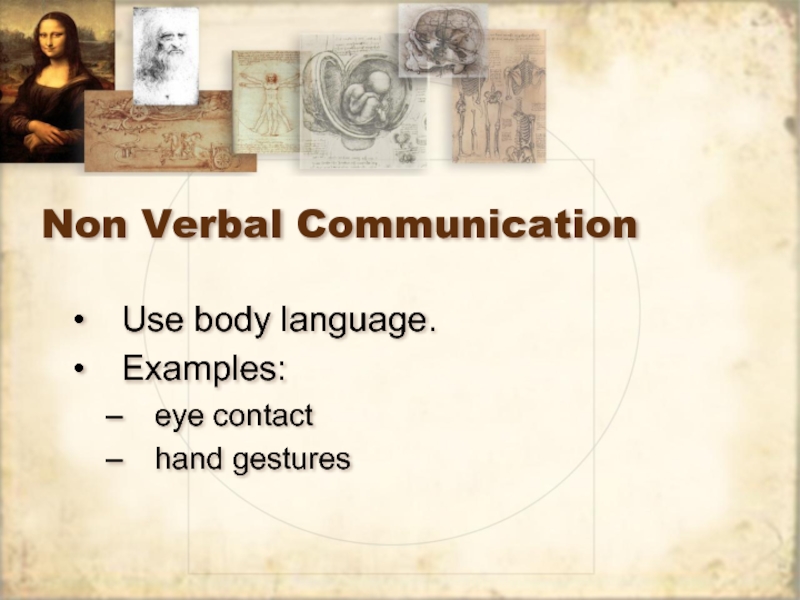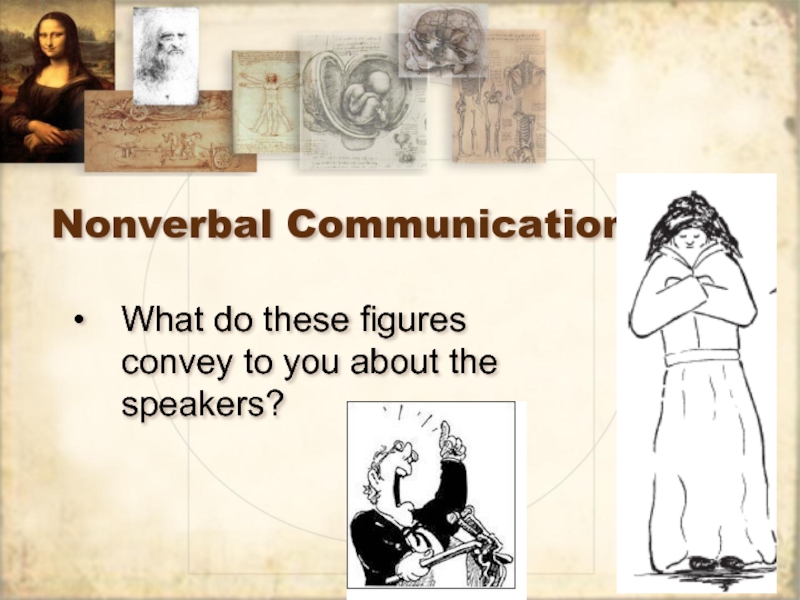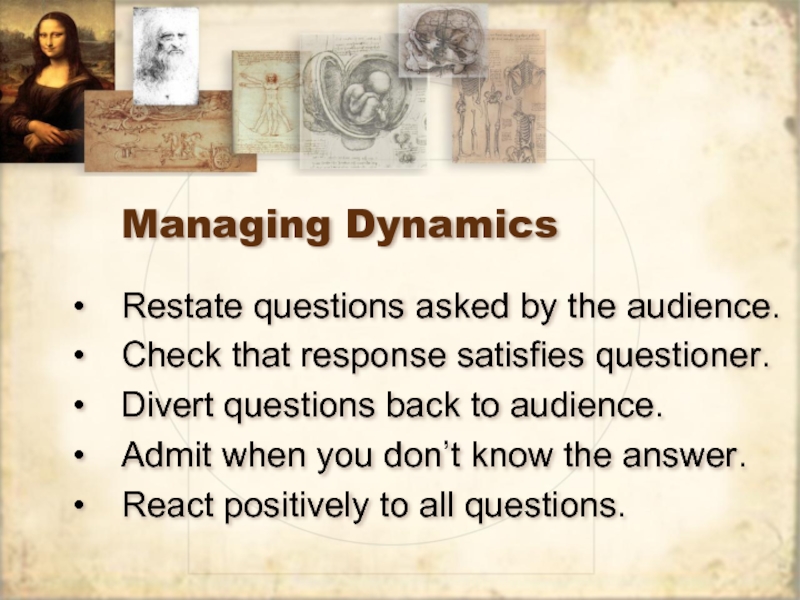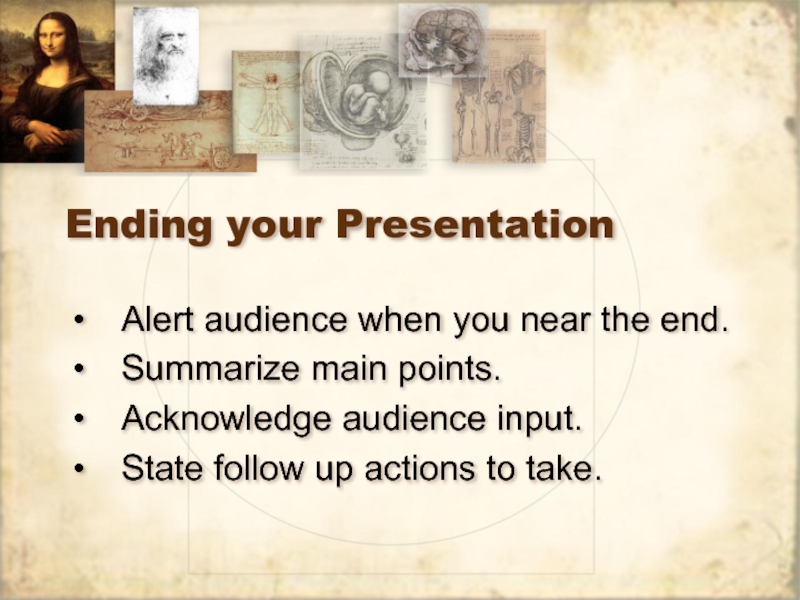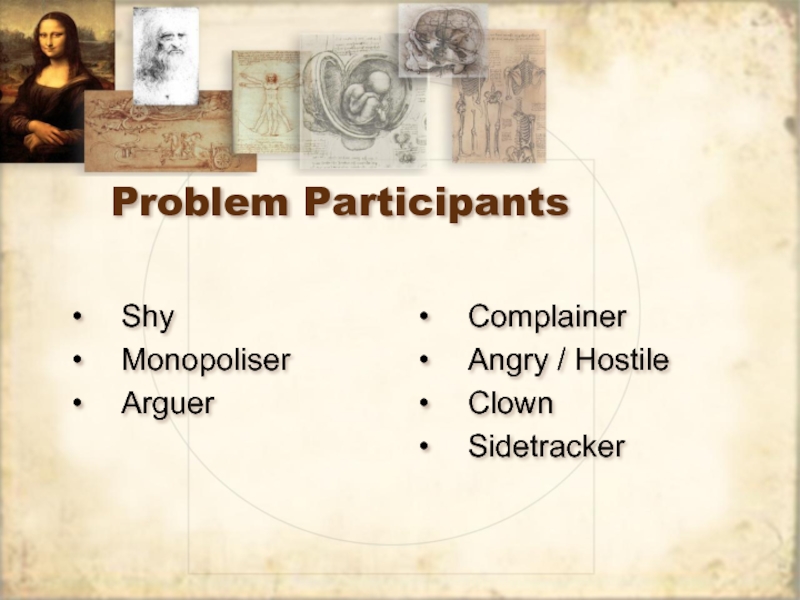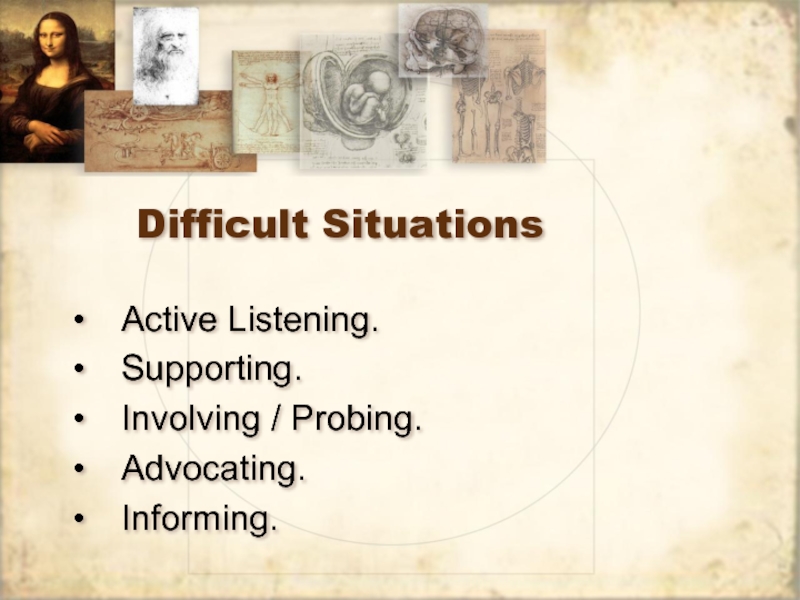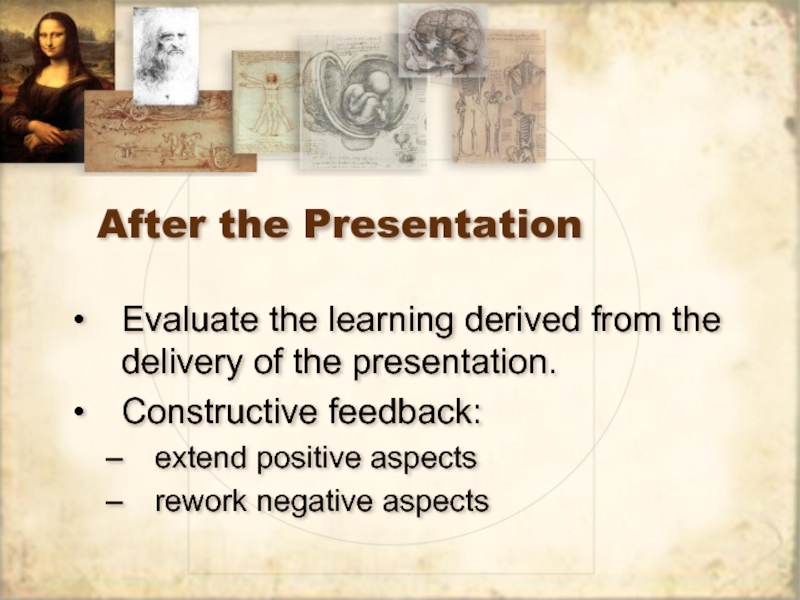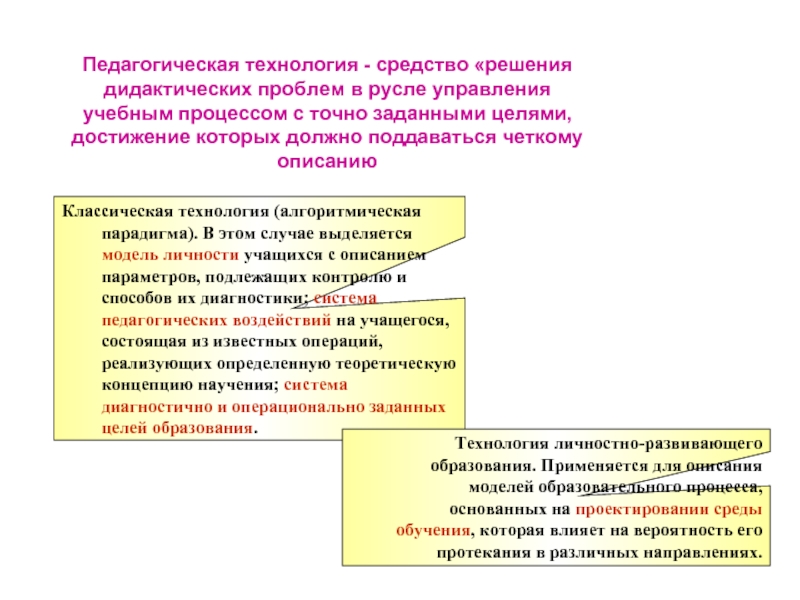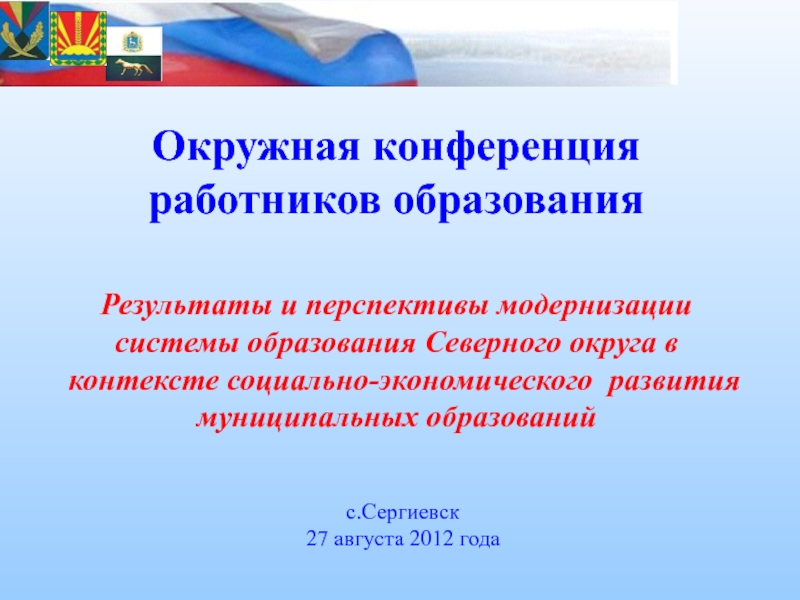of Education and Training,
by J. Hill & F. Ross
- Главная
- Разное
- Дизайн
- Бизнес и предпринимательство
- Аналитика
- Образование
- Развлечения
- Красота и здоровье
- Финансы
- Государство
- Путешествия
- Спорт
- Недвижимость
- Армия
- Графика
- Культурология
- Еда и кулинария
- Лингвистика
- Английский язык
- Астрономия
- Алгебра
- Биология
- География
- Детские презентации
- Информатика
- История
- Литература
- Маркетинг
- Математика
- Медицина
- Менеджмент
- Музыка
- МХК
- Немецкий язык
- ОБЖ
- Обществознание
- Окружающий мир
- Педагогика
- Русский язык
- Технология
- Физика
- Философия
- Химия
- Шаблоны, картинки для презентаций
- Экология
- Экономика
- Юриспруденция
Department of education and training презентация
Содержание
- 1. Department of education and training
- 2. Preliminary Question What are your feelings about
- 3. Outline Effective presentations Before the presentation During the presentation After the presentation
- 4. Effective Presentations Principles of effective presentations Characteristics of good presenters Keys to facilitating groups
- 5. Effective Presentations Questions Consider a successful presentation
- 6. Principles of Effective Presentations Have a positive
- 7. Characteristics of Good Presenters Establish conditions conducive
- 8. Characteristics of Good Presenters Listen actively, feed
- 9. Presenter or Facilitator Questions Define Presenter Facilitator What are the differences?
- 10. Keys to Facilitation Small group work for
- 11. Before the Presentation Questions What do you
- 12. Planning Considerations Purpose Audience Subject Matter Duration Venue Practice
- 13. Purpose Have a clear purpose What do
- 14. Audience Who are they? Why are they
- 15. Subject Matter Based on your audience analysis:
- 16. Duration Have you allowed time for audience
- 17. Venue What is the size and configuration
- 18. Practice Prepare outline and check: topic is
- 19. Overcoming Fear Questions What are your greatest
- 20. Overcoming Fear Know material well. Involve audience.
- 21. During the Presentation: Beginning Relax. Introduce yourself.
- 22. During the Presentation: Middle Involve
- 23. Involving your Audience Attention diminishes after 15
- 24. Non Verbal Communication Use body language. Examples: eye contact hand gestures
- 25. Nonverbal Communication What do these figures convey to you about the speakers?
- 26. Managing Dynamics Restate questions asked by the
- 27. Ending your Presentation Alert audience when you
- 28. Problem Participants Shy Monopoliser Arguer Complainer Angry / Hostile Clown Sidetracker
- 29. Difficult Situations Active Listening. Supporting. Involving / Probing. Advocating. Informing.
- 30. After the Presentation Evaluate the learning derived
Слайд 2Preliminary Question
What are your feelings about presenting?
Absolutely terrified of
presenting to
others
Confident and
relaxed
Слайд 3Outline
Effective presentations
Before the presentation
During the presentation
After the presentation
Слайд 4Effective Presentations
Principles of effective presentations
Characteristics of good presenters
Keys to facilitating groups
Слайд 5Effective Presentations Questions
Consider a successful presentation you have attended.
What made
it successful?
How did it effect you?
How did it effect you?
Слайд 6Principles of Effective Presentations
Have a positive attitude.
Know your audience.
Motivate your audience.
Plan
terminology.
Be yourself.
Be enthusiastic!
Be yourself.
Be enthusiastic!
Слайд 7Characteristics of Good Presenters
Establish conditions conducive to learning.
Explain complex notions clearly
& concisely.
Use a range of strategies and ideas.
Use a range of strategies and ideas.
Слайд 8Characteristics of Good Presenters
Listen actively, feed back information, and verify understanding.
Separate
from group activities and discussions when needed.
Address the needs of the audience.
Make framework adjustable for time.
Address the needs of the audience.
Make framework adjustable for time.
Слайд 10Keys to Facilitation
Small group work for high involvement
Clarity of instructions
Observe, listen,
and intervene
Allow leaders, recorders, and spokespersons to emerge naturally
Allow leaders, recorders, and spokespersons to emerge naturally
Слайд 11Before the Presentation Questions
What do you need to do:
some time before
the presentation?
at a time nearer the presentation?
immediately before the presentation?
at a time nearer the presentation?
immediately before the presentation?
Слайд 13Purpose
Have a clear purpose
What do you hope to achieve with the
presentation?
respond to something
present both sides of an issue
argue one side of an issue
tell a story
explain how something is done
describe something
respond to something
present both sides of an issue
argue one side of an issue
tell a story
explain how something is done
describe something
Слайд 14Audience
Who are they?
Why are they attending?
What ideas might be of interest
for him?
What knowledge do they have?
What terminology is appropriate?
What attitudes will they have to the topic?
What knowledge do they have?
What terminology is appropriate?
What attitudes will they have to the topic?
Слайд 15Subject Matter
Based on your audience analysis:
What information do you need to
present?
How do you present to ensure:
interest is sustained
audience is involved
time constraints are adhered to
How do you present to ensure:
interest is sustained
audience is involved
time constraints are adhered to
Слайд 16Duration
Have you allowed time for audience involvement?
As presenter, you MUST control
the use of time.
monitor audience reaction
incorporate flexibility
monitor audience reaction
incorporate flexibility
Слайд 17Venue
What is the size and configuration of the room?
What equipment will
you use? Have you ensured that it works?
How would you like the room set up?
How would you like the room set up?
Слайд 18Practice
Prepare outline and check:
topic is clearly stated
key points are included
sequence is
logical
timeframe is realistic
timeframe is realistic
Слайд 19Overcoming Fear Questions
What are your greatest fears about presenting?
Are these fears
realistic?
How can they be overcome?
How can they be overcome?
Слайд 20Overcoming Fear
Know material well.
Involve audience.
Use eye contact.
Prepare possible responses to problem
questions.
Check facilities.
Use prompts.
Consider appearance.
Practice, practice, practice…
Слайд 21During the Presentation: Beginning
Relax.
Introduce yourself.
State your purpose clearly.
Provide and overview.
Make eye
contact.
Слайд 22During the Presentation: Middle
Involve your audience.
Use visual material in
conjunction with verbal.
Слайд 23Involving your Audience
Attention diminishes after 15 minutes of presentation, so actively
engage:
invite comments, responses, questions
pose questions – open ended
invite anecdotes or experiences
invite comments, responses, questions
pose questions – open ended
invite anecdotes or experiences
Слайд 26Managing Dynamics
Restate questions asked by the audience.
Check that response satisfies questioner.
Divert
questions back to audience.
Admit when you don’t know the answer.
React positively to all questions.
Admit when you don’t know the answer.
React positively to all questions.
Слайд 27Ending your Presentation
Alert audience when you near the end.
Summarize main points.
Acknowledge
audience input.
State follow up actions to take.
State follow up actions to take.
Слайд 30After the Presentation
Evaluate the learning derived from the delivery of the
presentation.
Constructive feedback:
extend positive aspects
rework negative aspects
Constructive feedback:
extend positive aspects
rework negative aspects
